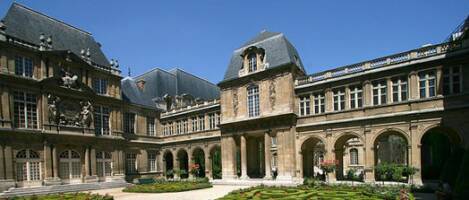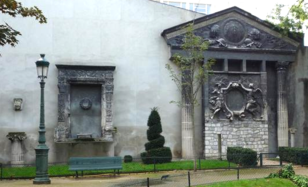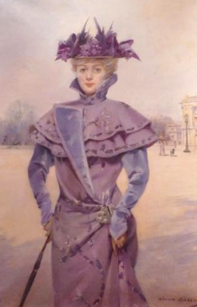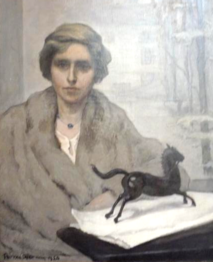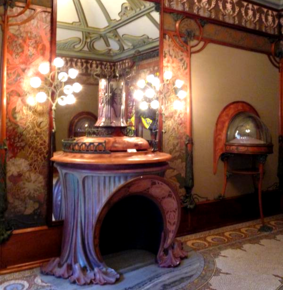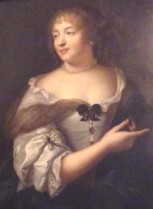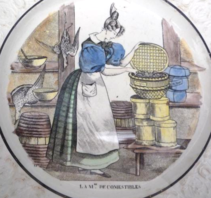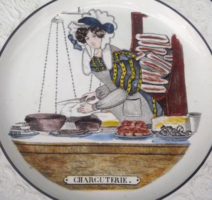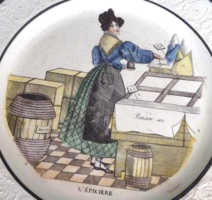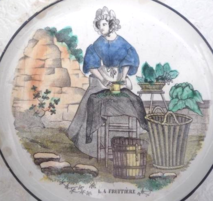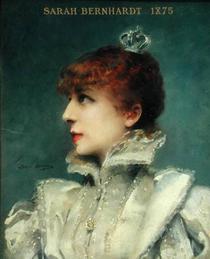Copyright 2017 Creative Travel Publications, LLC
To my mind the Carnavalet Museum is the best place to get a real look at Parisian history. This is the place to see all things Paris. It covers the history of Paris for at least two thousand years. On display here is a collection of prehistoric to modern day artifacts. I find artifacts from Neolithic Bercy and Gallo-Roman Paris. Later period rooms from demolished homes and businesses have been salvaged and reassembled for display. Paintings of famous people, scenes, and events enliven my experience of Parisian history.
I have read many books about Paris and its residents but the Carnavalet gives me an entirely different perspective of the city. For me there is something very real about this visual encounter with Paris. Best of all, perhaps, is this city of Paris museum is free. There is, however, a charge for temporary exhibits.
After eating my picnic lunch in the little park behind the Carnavalet I stop in the museum shop. I am completely amazed how many books are for sale. Most of the books, of course, are in French but I do find an English one about Madame Sevigne. I also find some excellent reproductions of antique maps of Paris. There are a few souvenir items for sale too. I buy a portfolio, decorated with illustrations of Marie Antoinette, to hold my miscellaneous papers. It is pretty and durable.
The brochure informs me that the Hotel Carnavalet was built in 1548 as a lavish townhouse. It's most famous resident was Madame de Sevigne, a prolific letter writer, who lived here from 1677 until her death in 1696. The hotel was purchased by the city of Paris in 1866 specifically to display artifacts of a disappearing city. The museum opened its doors to the public on February 15th, 1880. Archaeological and Revolutionary artifacts were displayed and a historical library was installed.
Fouquet Jewelry Shop
( restrooms just before entrance )
Walking into the Carnavalet Museum courtyard I see a lovely landscaped garden and benches for seating. Along a long columned portico, strewn with ancient Roman carved stonework, I come upon the entrance door to the museum. I am astonished to find it is small and unimposing. It makes me feel welcome. Opening the creaky wooden door I proceed to the ticket counter. The guide gives me a free ticket and brochure for the permanent collection. He asks me if I would like an audio guide. I decide to get one. The cost is minimal. He also points out the coat check to my right. The coat check for large bags, backpacks, and coats (no suitcases) is free. If you choose to leave your belongings a small gratuity is appreciated when you leave.
The entry to the Carnavalet was renovated in 2014. The restrooms on the lower floor are now open but not accessible to handicapped individuals nor are the ones on the ground floor in the adjoining Hotel Le Peletier at the end of the prehistory Gallo-Roman gallery. However, an elevator to the second floor near the jewelry salon is accessible for everyone. Unfortunately this restroom is often very busy. It is the restroom used by visiting school children. So check your map for the exact location of the elevator and restroom and expect a long line.
I am particularly interested in the very earliest history of Paris so I start in the prehistoric and Gallo-Roman gallery. By the way, this room is where you will find one of the two restrooms. In this gallery I see prehistoric tools, pottery, jewelry, and the remains of a canoe (pirogue in French) from the Neolithic archaeological site at Bercy.
Among the Gallo-Roman artifacts are similar finds plus jewelry, statues, coffins, and bits and pieces of monuments. Perhaps the most poignant items on display are the death mask of an infant and a child-size stone coffin. Even though they are made of stone it is hard not to feel the genuine grief of this child's family. It touches me and pulls at my heartstrings.
Going back to the Hotel Carnavalet I stop at the top of the stairs to the first floor. Looking across a marble railing I see two untitled paintings that show scenes of domestic life during the 1800's. In one a nursemaid is tending several children. In the other a woman appears to be relaxing with her young daughters. The paintings make me feel an uncomfortable sense of social inequality.
I continue on to explore the period rooms. Among the rooms is a salon devoted to Madame de Sevigny, a reception room of the Hotel d'Uzes, and the ballroom of the Hotel de Wendal. I also find furnishings from the the bedrooms of the writers Anna de Noailles and Marcel Proust. I nostalgically imagine myself in these rooms of long ago taking tea in the salon, meeting friends in the hotel's reception room, dancing the night away in the ballroom, and going home to sleep in one of the elegent bedrooms.
The Carnavalet Museum abounds with images of women from Paris. I see royalty, saints, reformers, and performers. Women are portrayed at home and work experiencing happiness and sorrow. They are painted on canvas, imprinted on decorative plates, and sculpted in busts of plaster and bronze.
Women and Dog Mourning at the
Grave of a Revolutionary Hero
Unknown Artist 1850
On the day I visit the Carnavalet Museum I notice several artists painting in the galleries. I come across a young woman painting her own stylized version of Francois Gerard's famous painting of Juliette Recamier.
This painting, made in 1880, has always been one of my favorites. I have wanted to see it up close for so long. Now that I am here I worry about disturbing the concentration this student. Quietly walking back and forth behind the artist I peruse the painting. It exudes beauty from every vantage point. In the painting a makeshift curtain draped across the arched door provides a soft unimposing background for the model. She is seated on a Greco-Roman looking chair in a fetching, relaxed pose.
Juliette Recamier is a woman of the French Revolution. I notice her dress reflects the values of that era.
She is costumed to resemble a Roman goddess. Recamier is portrayed as the embodiment of revolutionary ideals...liberty, equality, and fraternity. She is not artificial or ostentatious. I find the simplicity of this painting very appealing. Yet the details are marvelous. The fabric of her silk dress and wool shawl are painted in lustrous detail. Even Juliette's skin glistens with a healthy sheen. Gerard seems to have captured the softness of her body by juxtaposing it against the marble floor and two rigid upright columns. "Come back again," Juliette seems to say to me. "Next time you visit I will be waiting here just for you. Stop by again...okay?"
Willing myself to move on I reply yes and go off in search of more wonderful art. The Carnavalet Museum appears to be rich in paintings done by women artists. A helpful young male guide, curious about my quest, even gives me a lead on some galleries in Paris currently exhibiting modern day women artists.
Up until the late 17th century there is no art displayed that was created by women. However, by the 18th century women artists appear to come into their own. The Carnavalet curators have made a definite effort to acquire a good selection of paintings by reputable woman artists. On the first and second floor of the museum I find paintings by Elisabeth Carman-Chamay (self-portrait), Suzanne Lelique's (The Poker Party), Marguerite Barthemey (Yvonne Printemps), and Berthe Noufflard (The Critic Camille Mauclair). Most of these women began painting in the late 1800's and were actively pursuing their careers as artists well into the 19th century. I find it difficult to choose my favorite paintings from among these fine artists. Here is a selection of the ones I really like.
Natalie Clifford Barney
Romaine Brooks
1874 - 1970
Souvenir of the Russian Ballet
Berthe Noufflard 1886 - 1971
Adelaide Binart
Marie-Genevieve Bouliard 1763 - 1832
Elegant Woman
Louise Abbema
1858 - 1927
Jeanne Samary
Louise Abbema
1858 - 1927
Young Woman with Dove
Rosalba Carriera
1675 - 1757
Sarah Bernhardt
Louise Abbema
1858 - 1927
The museum is closing and it is time for me to leave. Turning in my headset the guide asks me if I saw the jewelry shop. He told me it was very popular with the gay women of Paris. Here was the very place they bought affordable jewelry, which he called bijou, for their lovers. I wonder if the expat poet Natalie Clifford Barney or the famous actress Sarah Bernhardt ever shopped there for a lovely necklace or bracelet or earrings for their special someone. Perhaps...
Every time I visit the Carnavalet I see and learn some new thing about this remarkable city. The last time I went the medieval rooms were open but the prehistory and Gallo- Roman room was closed. It often depends on the day and time you visit whether a room is open or closed. On some trips I visit this museum several times during my stay in Paris. The museum is free so it costs me nothing to visit again and again.
On the Carnavalet Museum website you can download a PDF brochure. The entire museum is handicapped accessible except for certain restroom facilities. A schedule of activities is available. Most of the activities are in French. The museum offers drawing and painting workshops, walking tours, tours and workshops at the museum focusing on special topics, and concerts for individuals, groups, and families.
I notice the museum offers unique activities for individuals with special needs including a French sign language workshop. There may a charge for these extra activities but the cost seems very reasonable to me. Researchers and students can visit the graphic arts library or access it on the internet.
The outside park has lots of benches, a lovely fountain, and is a city WiFi spot. Many people eat their lunch here.
The inside park is a place for resting.
It is a nice place to plan your next adventure or meet up with friends.
Madame de Sevigney
Claude Lefebre 1665
That same year a large collection of paintings was purchased by the museum, enriching the collections with works by Caneella, Demarchy, and Noel along with many other well-known artists. Since then the museum has been enlarged to more than triple its original size. Collections now feature every area and aspect of Parisian life and culture. Although women's art does not predominate this museum images of woman are prolific. This is one of the many reasons why I find this museum so relevant and appealing.
Women's Travel Abroad
For Women About Women By Women
Prehistory and Gallo-RomanGallery
Rest Rooms
I find myself genuinely charmed by the painting of the Russian Ballet. It reminds me of my daughter. She has danced since she was just a little girl. By her early teens she was performing with a ballet company similar to this one.
However, the toes of her point shoes were much larger than the ones these dancer are wearing. It is said the toes of their shoes were no bigger than the size of a 25 cent coin.
Berthe Noufflard has succeeded in capturing this difference. Even though her painting is definitely impressionistic she realistically painted the female dancer's little feet balancing on the tiny end of their ballet shoes.
Lousie Abbema's realistic paintings portray two images of women during the 1900's. In one she has painted an unknown woman elegantly dressed for an afternoon out. In the other painting of Jeanne Samary, one of the directors of the French National Theater, she has painted a woman wearing clothing suitable for a day at the office.
You Are Welcome to Contact Me Personally With Comments or Questions
CLOSED FOR RENOVATIONS
Destinations
